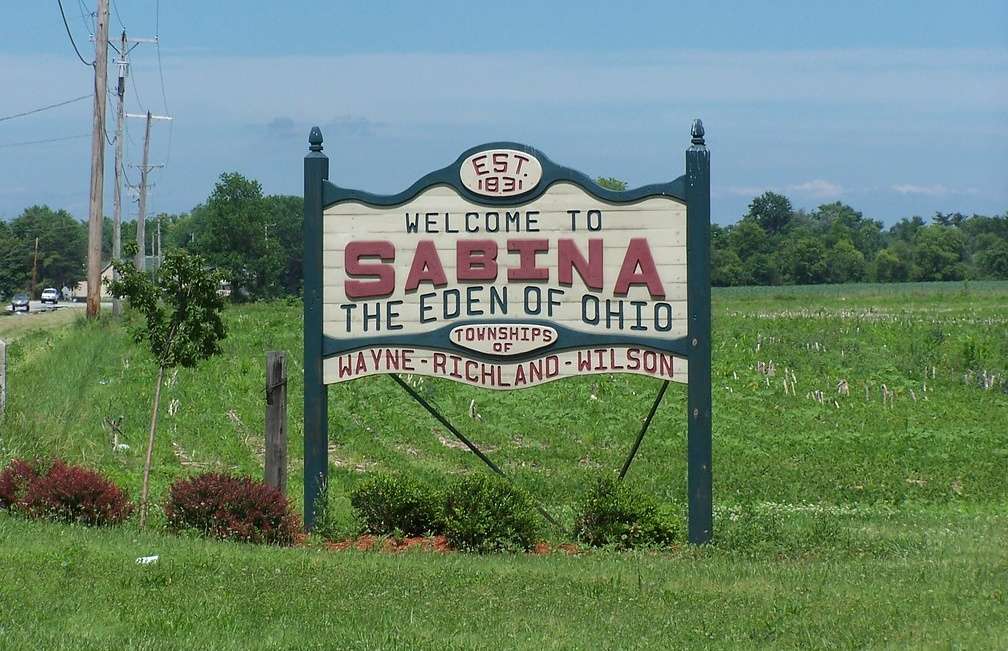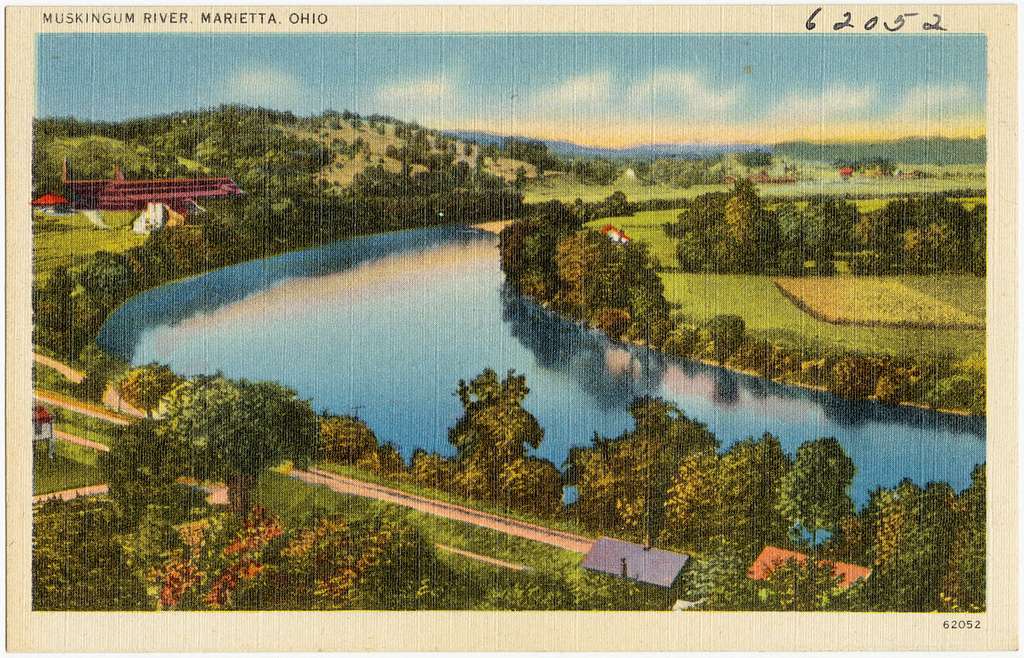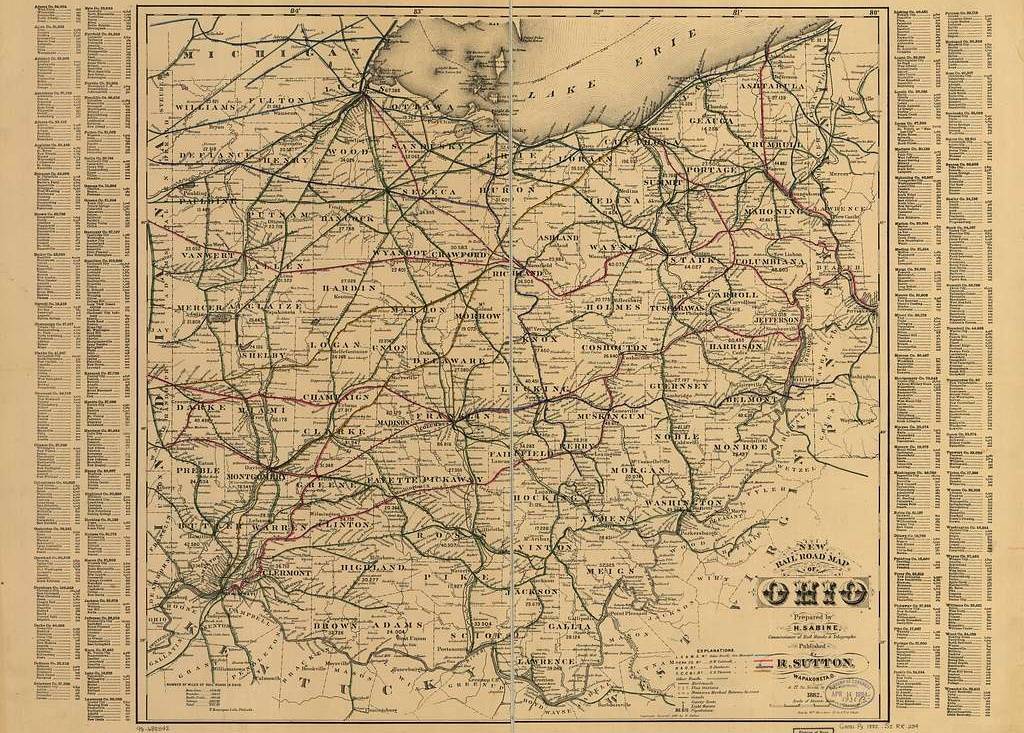If you should ever find yourself traveling along “The Three C Highway” (that’s US Highway 22 or Ohio Route 3) between the cities of Wilmington and Washington Court House, you’ll drive through a village named Sabina. In most ways, it’s a typical village, just like any of the countless others found across the state with some grocery stores, a few churches, some restaurants you might find worth checking out, and your typical assortment of agricultural supply stores and gas stations that may make the place look the same as any other village.
But, hidden in the village’s history is a fascinating unsolved mystery. A mystery that is often overlooked due to its lack of sensational blood and gore, political scandal, or plot twists.
Sabina, 1928
It all started one day in June, 1928, when some highway workers discovered the body of a “colored” man resting against a fence post a few miles outside of town on US Highway 22 near Borum Road. He appeared to be in his late 50s or early 60s and had no form of identification. There were no signs of violence and it appeared as if the guy had just sat down to get some rest when he died. When the coroner examined the body, he concluded the guy had died of natural causes.
So, the mystery here isn’t so much of a whodunnit, but … Who was this guy? And, what was he doing there?
The Clues
The Sheriff’s Department did investigate, trying, if nothing else, to put a name to the guy. They contacted law enforcement officials throughout the state to see if he matched the description of someone reported missing, but this provided no further information.
The Sheriff did speak with several people who lived in Sabina to see if they knew anything, however, none of them claimed to know who the gentleman was. Several did say that they had passed the guy on the street, and a few even talked to him briefly. A couple said they thought the guy looked ill, and a few others said the man had asked if they needed any work done, although none had any work suitable for the guy. This raised the theory that maybe he was walking from town to town looking for a job, and when none were found he was forced to walk on to the next town. No matter how plausible that theory might be, it’s just speculation at this point.
The third (and final) clue was a small scrap of paper on which was written “1118 Yale Avenue” which happened to be a Cincinnati address. Sabina authorities asked the Cincinnati Police to check out that address, and when they did so they reported it was nothing but an empty lot.
According to different reports, the Cincinnati Police might have discovered that there had been a house at that address that had recently been demolished or burnt down which had been owned by a “colored” man named Eugene Johnson, or that someone with that name lived nearby, or they might have done little more than drive by and notice there was no house there any longer. Either way, nobody could determine why the man who died in Sabina had that address in his pocket or what that clue meant. Also, if there had been a house owned by a man named Eugene, there was no way of knowing if this was the same person who died just outside Sabina.
As far as clues go … that was it.
What Happened To The Dead Guy
After being discovered, and while attempts were being made to discern the man’s identity, he was taken to the local funeral home where he was embalmed and put on display in hopes that someone could identify him. In light of things to come, it’s important to note that whoever this “colored” person was, the Sheriff’s department, and especially the funeral home, treated him with the utmost respect.
Word of the unknown dead guy began to spread throughout many Ohio newspapers, and the rumor mills too. A few families made their way to Sabina in hopes that this might prove to be a missing loved one only to turn away disappointed. Unfortunately, not all of this guy’s visitors were so well-meaning. He also seemed to attract quite a few people who just wanted to see a dead body.
As the years progressed into decades, the interest in the corpse never seemed to wane as it proved to be something of a local attraction. The people running the funeral home stated that most visitors were well-behaved, however, sometimes someone would come knocking on the door while a funeral was in progress and demand to see the body, to the shock and dismay of those grieving. And, there were some times, such as around Halloween, that proved to be much busier than normal.
And then there were the pranks. On several occasions, the body would disappear from the funeral home only to show up a day or two later in some farmer’s field or at a certain state university in Columbus.
According to some reports, over a million people went to the funeral home and saw the body, as was evidenced by the log book kept just inside the door.
The corpse was also subjected to a number of pranks.
At some point, people started to refer to the guy as “Eugene” although today nobody remembers exactly why that was. No matter where the name came from, it stuck.
Some attribute the name to The Cincinnati Police, suggesting a theory that his identity was Eugene Johnson, who had once lived at, or near, the address in his pocket. It is unclear if said Eugene was ever located, or how it was determined he was not the dead guy, or if there ever was a Eugene Johnson, to begin with. (For the record, in the 1910s and 1920s I found several people by the name of Eugene Johnson living in the Cincinnati area. For various reasons, I was able to rule each and every one of them out as a possible “suspect” – for lack of a better word.)
The Burial of Eugene 1964
After residing in the Littleton Funeral Home for thirty-five years, the place decided it had enough of the lookie-loos, enough of the childish pranks, it was time, finally, to put “Eugene” (or whatever his name truly is) to rest. On the afternoon of Wednesday, October 21, 1964, a small crowd gathered at the funeral home to pay their last respects.
With help from The Sabina Cemetery, The Littleton Funeral Home, and The Spurgeon Vault Company, the unknown man was at last laid to rest under a headstone that says simply: “Eugene” Found Dead 1929, Buried 1964
At that point in time, there was little hope that anyone would be able to view the body and recognize it as their friend or family member. Although the body had been well preserved, his clothing had needed to be replaced a few times, and thanks to all the pranks, it was no longer in the best physical condition.
At least, if nothing else, it’s good to know that the man was buried with all the grace and dignity that could befall him.
Looking Beyond “Eugene”
In many different ways, this story embodies humanity at its absolute best – and its worst.
This story starts in 1928, a time that wasn’t exactly kind to many black Americans. The Klan had recently started it’s second reiteration in 1915, picking up where the original group had left off and expanding not just in ideology, but geographically as well.
In fact on the evening of February 10, 1923 (so, six short years before the man died) a small group of men drove into Sabina and burned a cross about the size of a screen door, in front of a restaurant owned and operated by a “colored” man named James H. Johnson, who had been having some legal problems of his own having recently been arrested for selling alcohol. A sign left at the scene read “Bootleggers and gamblers take warning-48 hours to get out of town. K.K.K” Several days later, the “Letters to the Editor” section of the Wilmington newspaper printed a letter apparently from someone named James H. Johnson demanding to clarify the issue, saying that the K.K.K. sign was not placed in front of the “James H. Johnson (Colored) Restaurant” but the empty storefront next door, and anyone who says otherwise is a liar.
Throughout the 1920s and 30s, The Klan was meeting regularly at various parts of the state and membership was starting to grow. At the same time, there were other groups forming, trying to counterbalance the Klan, so it’s safe to assume that both sides of the racial issue were well represented.
Any story that begins with someone finding a “colored” man dead alongside the road in 1928 – you would think that story would feature things like man’s inhumanity toward other men, but from what I have seen, the Littleton Funeral Home (its owners and staff) always treated the unknown man with the highest level of respect, going above and beyond what one would expect from other places. For example, when Mr. Littleton first heard “Eugene” was to be buried in the local potter’s field, it was he who purchased the plot at the Sabina Cemetery. The Spurgeon Vault Company helped provide the casket and its employees volunteered to be the pallbearers, walking the remains from the funeral home several blocks to the cemetery.
Some Questions Remain
The questions remain. Who was this person who died on the side of the road? Where did he come from? Where was he going? And, perhaps most telling of all – What was his name? Sadly, we don’t have the answers to any of these questions.
When he was interred in 1964, there was little hope that anyone would ever be able to answer these questions.
Today, however, we do have technology that wasn’t even thought of that might just help us solve this mystery. Advances in DNA technology, for example, when combined with genetic genealogy just might lead us down a new path, one with answers. Even after a century, it just might be possible to locate close relatives, perhaps someone who wonders whatever happened to Grandpa (or Great-Grandpa) … so, wouldn’t it be worth it? If nothing else, it would provide the perfect ending to the story of “Eugene” or whatever his name really was.



